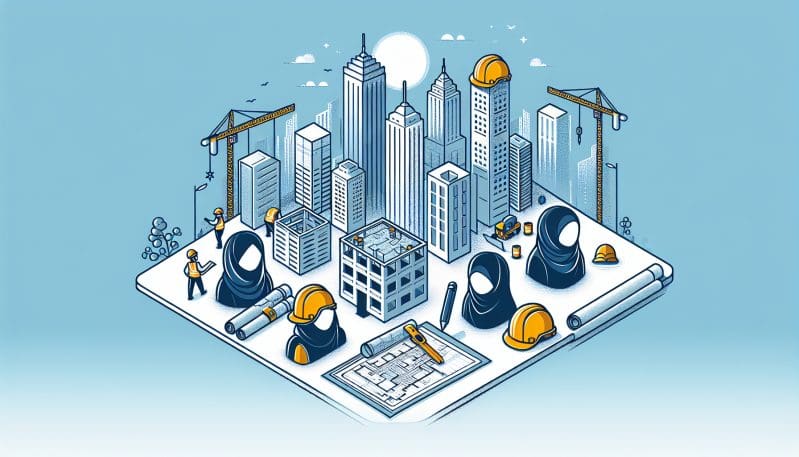Constructing Equity: How Women Architects are Redefining Workplace Culture in Urban Development
- Home
- Constructing Equity: How Women Architects are Redefining Workplace Culture in Urban Development
- Editors Desk
- March 11, 2024
- 0 Comments
In the towering skylines of modern cities, the blueprints of our urban environments are being redrawn by a burgeoning force: women architects. These women bring more than technical expertise and design acumen to their drafting tables; they bring the promise of change in a field that has long been dominated by men. This shift isn’t merely about increasing the number of women in architecture; it’s about fundamentally transforming how workplaces operate within the industry and, by extension, how our urban spaces are conceived and constructed.
The challenges female architects face are as structurally complex as the buildings they design. From the scarcity of role models and mentors to the persistent wage gap and uneven opportunities for advancement, the barriers can seem as imposing as the steel frames of the skyscrapers they help to erect. Yet, amid these challenges, women in architecture are not only surviving—they are thriving and driving a culture shift that embraces diversity, equity, and collaboration.
Leadership through a female lens often extends beyond the drafting board into the realm of workplace culture, advocating for policies and practices that support work-life balance, parental leave, and flexible working hours. Women are also at the forefront of pushing for more collaborative and less hierarchical office environments, which have traditionally favored men. These cultural shifts do not simply create a more equitable workplace for women; they have tangible impacts on team dynamics, productivity, and the overall morale of the workforce.
Moreover, the impact of female architects extends far beyond the confines of their offices. They are actively involved in designing spaces that are inclusive and accessible, taking into account the needs of a diverse population—something that can be overlooked in a homogeneous design environment. The incorporation of these perspectives can lead to innovative solutions and more humane urban spaces that serve a broader spectrum of the population.
In practice, we have witnessed transformative projects led by women that not only redefine the skyline but also the social fabric of communities. Consider, for example, the recent development of a mixed-use building in the heart of the city designed by a team of women architects. This project included affordable housing units, community spaces, and childcare facilities, reflecting the values of inclusivity and support for working families.
To maintain momentum and truly cement these changes, women architects are employing change management strategies that address resistance head-on. They are engaging in dialogue with peers, mentoring the next generation of female architects, and actively participating in policy-making to ensure that the industry evolves.
By championing gender equity in the architectural realm, these professionals are not just constructing buildings; they are constructing new paradigms of work and community. The ripple effects of their efforts are creating more dynamic, adaptive, and inclusive urban landscapes that reflect the diversity of the populations they serve.
As we celebrate the strides made by women in architecture, it is crucial to acknowledge the work that still lies ahead. The industry as a whole must continue to confront gender bias and systemic barriers, ensuring that the path forward is not only visible but accessible to all who aspire to shape the world through design. The legacy of these pioneering women will be measured not just in the steel and glass of the structures they leave behind, but in the more equitable and just foundation they are laying for generations to follow.
Women architects are not just contributors to urban development; they are powerful catalysts for change. By embracing the myriad challenges and opportunities that come with their unique position, they are redefining what it means to build—not just in terms of architecture, but in shaping the very culture of the workplace and the character of our urban environments.

